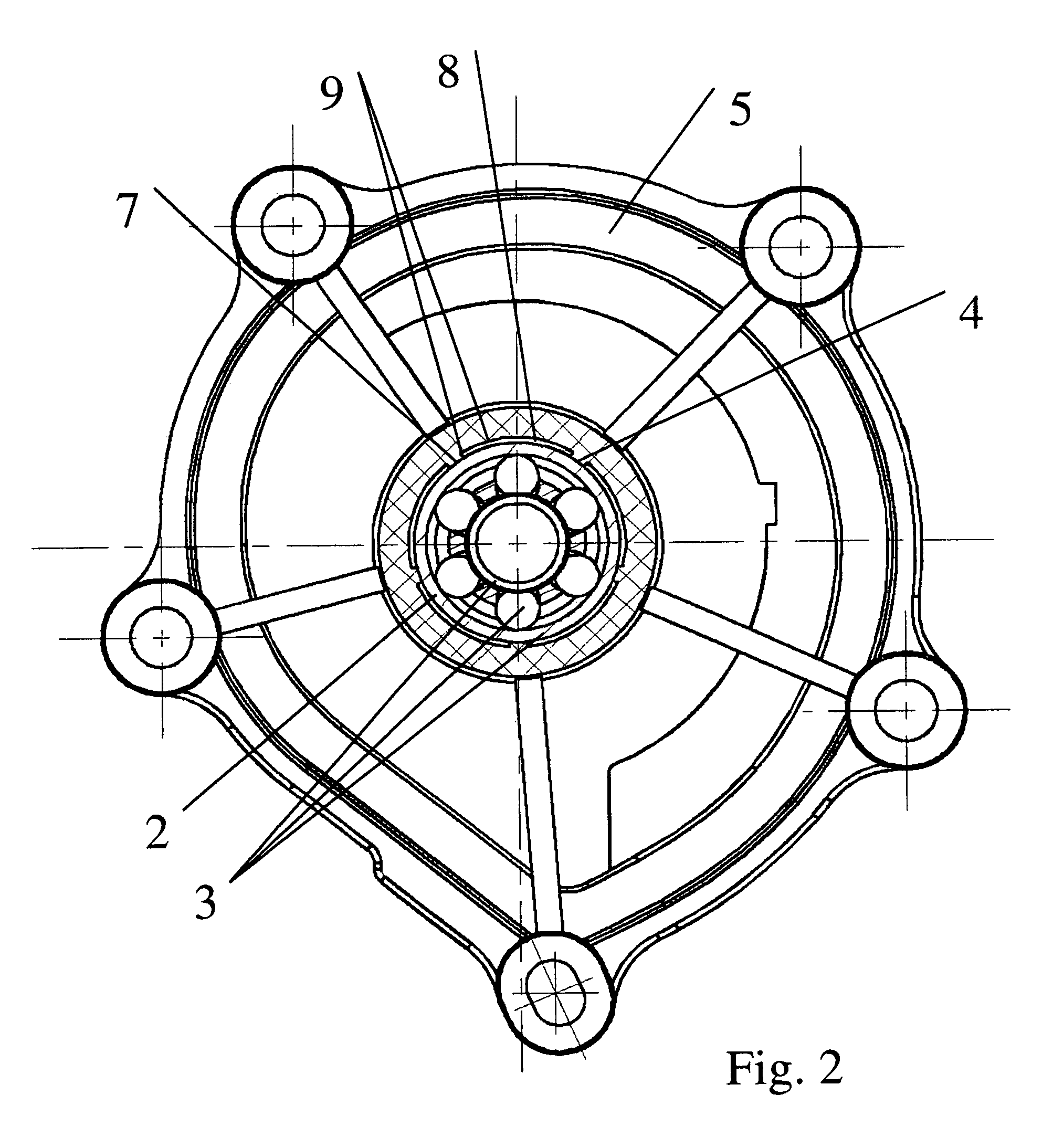Assembly and method for mounting a pump bearing in/on plastic coolant pump housings
a technology of plastic coolant pump and bearing, which is applied in the direction of bearings, shafts, couplings, etc., can solve the problems of high temperature, large thermal stress on the pump bearing, and the bearing used as the pump bearing must demonstrate a relatively large bearing play, so as to achieve cost-effective and simple production technology, the effect of simple production and installation
- Summary
- Abstract
- Description
- Claims
- Application Information
AI Technical Summary
Benefits of technology
Problems solved by technology
Method used
Image
Examples
Embodiment Construction
[0053]FIG. 1 shows one of the possible constructions of the assembly according to the invention in a side view, in section. FIG. 2 shows the related section at X-X, according to FIG. 1.
[0054]In this connection, a bearing ring 2 provided with at least one bearing ring groove 1, of a pump bearing 3, is disposed in a bearing seat 4 of a plastic coolant pump housing 5. The bearing seat 4 is formed by several positioning crosspieces 7 in connection with an axial bearing collar 6.
[0055]Adhesive grooves 8 that are separated from one another, i.e. separate, are disposed between the positioning crosspieces 7 and the bearing collar 6; they are provided with liquid-tight walls (9) in four of the axial directions, in each instance, i.e. they have no connection channels among each other.
[0056]Only above these adhesive grooves 8, i.e. in the region of the bearing ring 2 of the pump bearing 3 to be disposed there, and furthermore at the outer edge of the pump bearing 3, in the region of the slot-s...
PUM
| Property | Measurement | Unit |
|---|---|---|
| depth | aaaaa | aaaaa |
| depth | aaaaa | aaaaa |
| temperatures | aaaaa | aaaaa |
Abstract
Description
Claims
Application Information
 Login to View More
Login to View More - R&D
- Intellectual Property
- Life Sciences
- Materials
- Tech Scout
- Unparalleled Data Quality
- Higher Quality Content
- 60% Fewer Hallucinations
Browse by: Latest US Patents, China's latest patents, Technical Efficacy Thesaurus, Application Domain, Technology Topic, Popular Technical Reports.
© 2025 PatSnap. All rights reserved.Legal|Privacy policy|Modern Slavery Act Transparency Statement|Sitemap|About US| Contact US: help@patsnap.com



